
In this work, a reversible data hiding (RDH) algorithm is proposed for high dynamic range (HDR) images containing an additional luminance channel. Since prediction accuracy is the key of RDH, we propose to embed data into HDR images by exploiting the edge information among the luminance channel and color channels to achieve accurate prediction and high embeding capacity. Besides, a new edge-directed order is presented to reduce the visual loss of the stego image. Various experimental results demonstrate that the proposed algorithm can hide more data into HDR images with less distortion than directly applying traditional RDH methods designed for low dynamic range (LDR) images. Compared to the current HDR hiding algorithms, the proposed method is not only reversible, but also achieves a tradeoff between embedding capacity and distortion.
Note: Please contact me by email if you'd like to have the testing sequences or compare your new algorithm with ours.
Wei Zhang and Wai-Kuen Cham. Gradient-directed Composition of Multi-exposure Images. Proc. IEEE Conference on Computer Vision and Pattern Recognition (CVPR). San Francisco, USA, Jun. 2010.
Wei Zhang and Wai-Kuen Cham. Gradient-directed Multi-exposure Composition. IEEE Transactions on Image Processing (T-IP). 21, NO.4, April 2012.
Wei Zhang and W. K. Cham. Reference-guided Exposure Fusion in Dynamic Scenes. Journal of Visual Communication and Image Representation (VCIR), vol.23, no.3, pp.467-475, 2012.
"Gradient-directed Composition of Multi-exposure Images". Inventors: Wei Zhang and Wai-Kuen Cham. US Provisional Patent Application filed.
#1
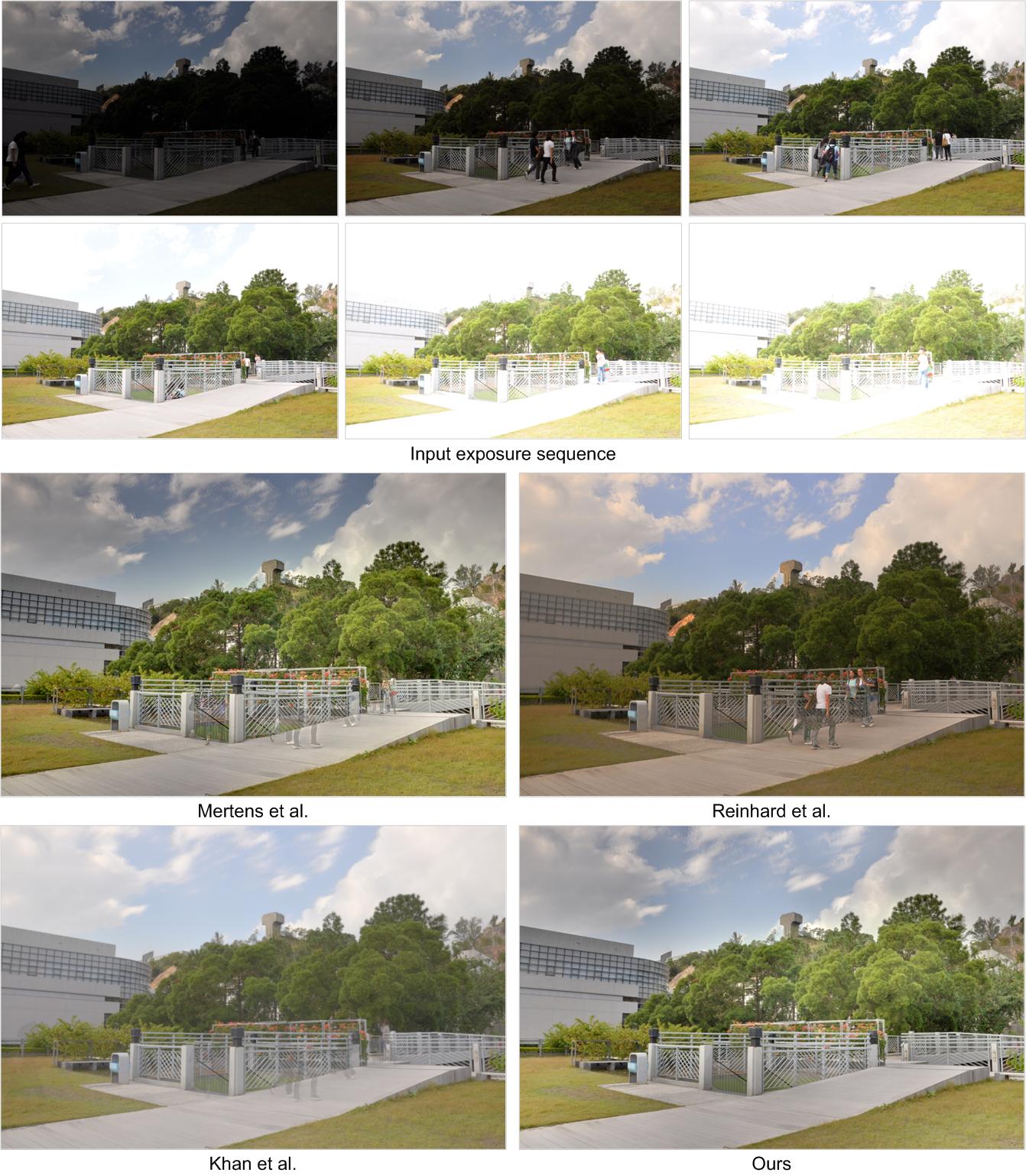
#2
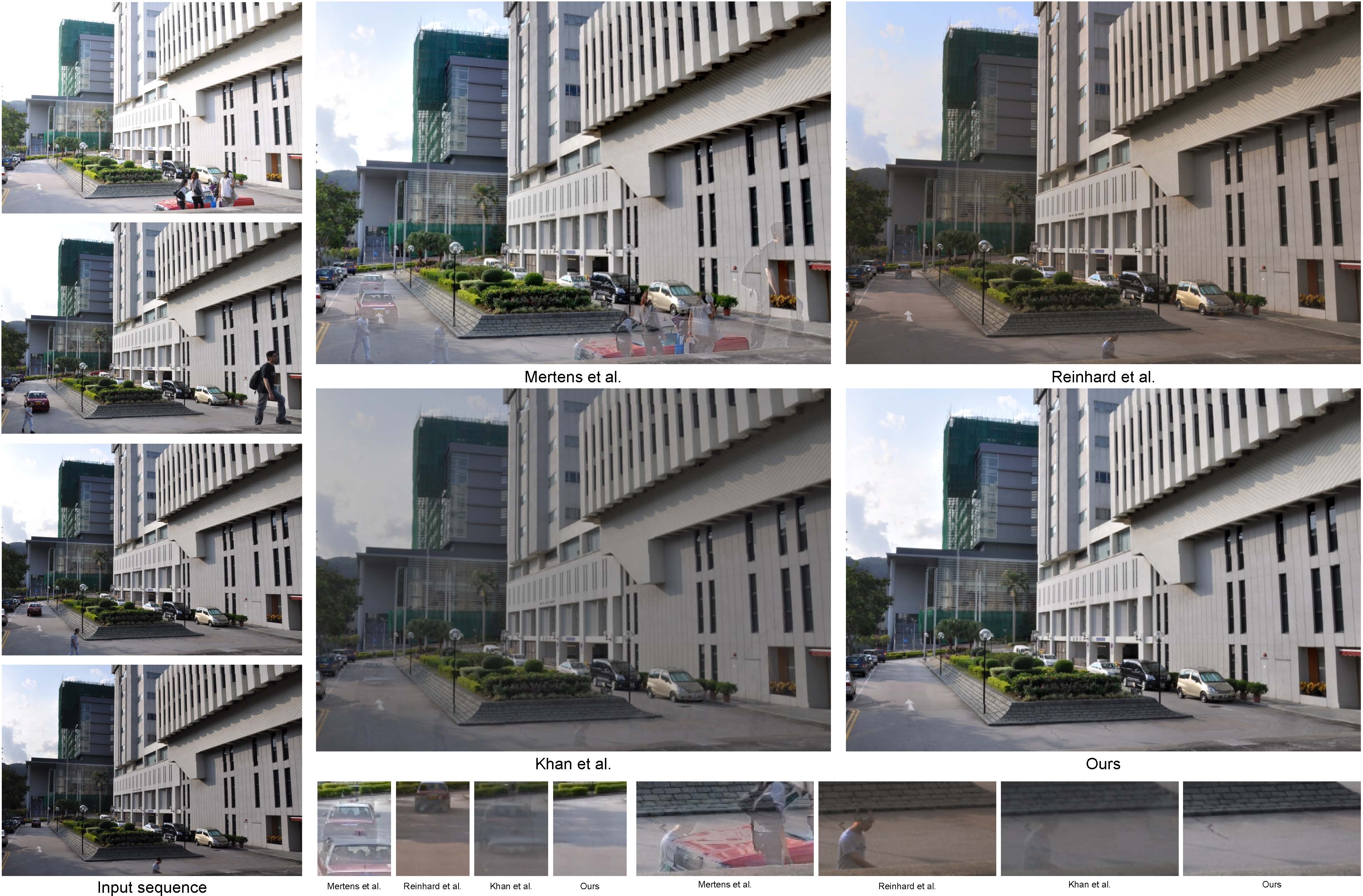
#3
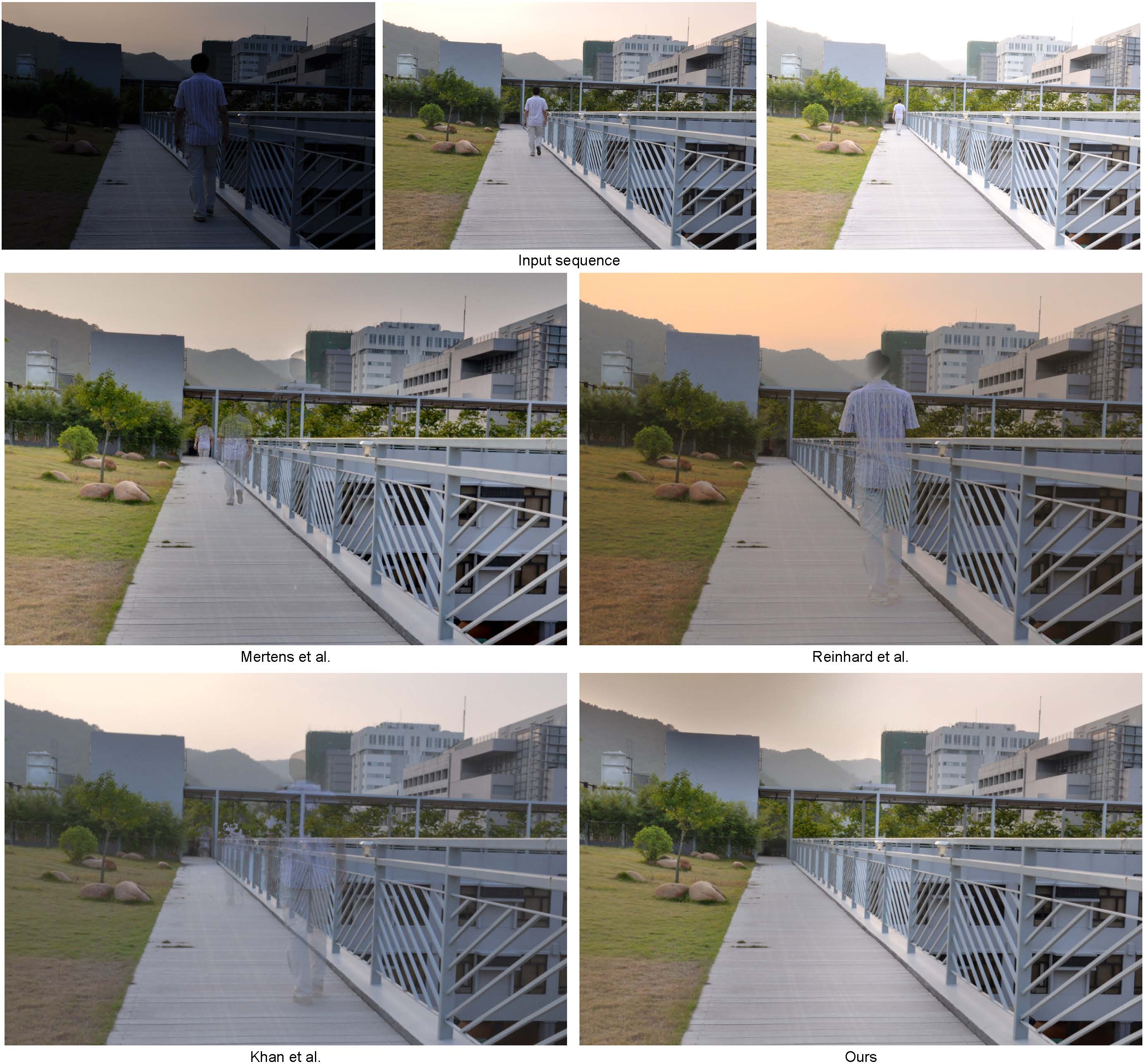
#4
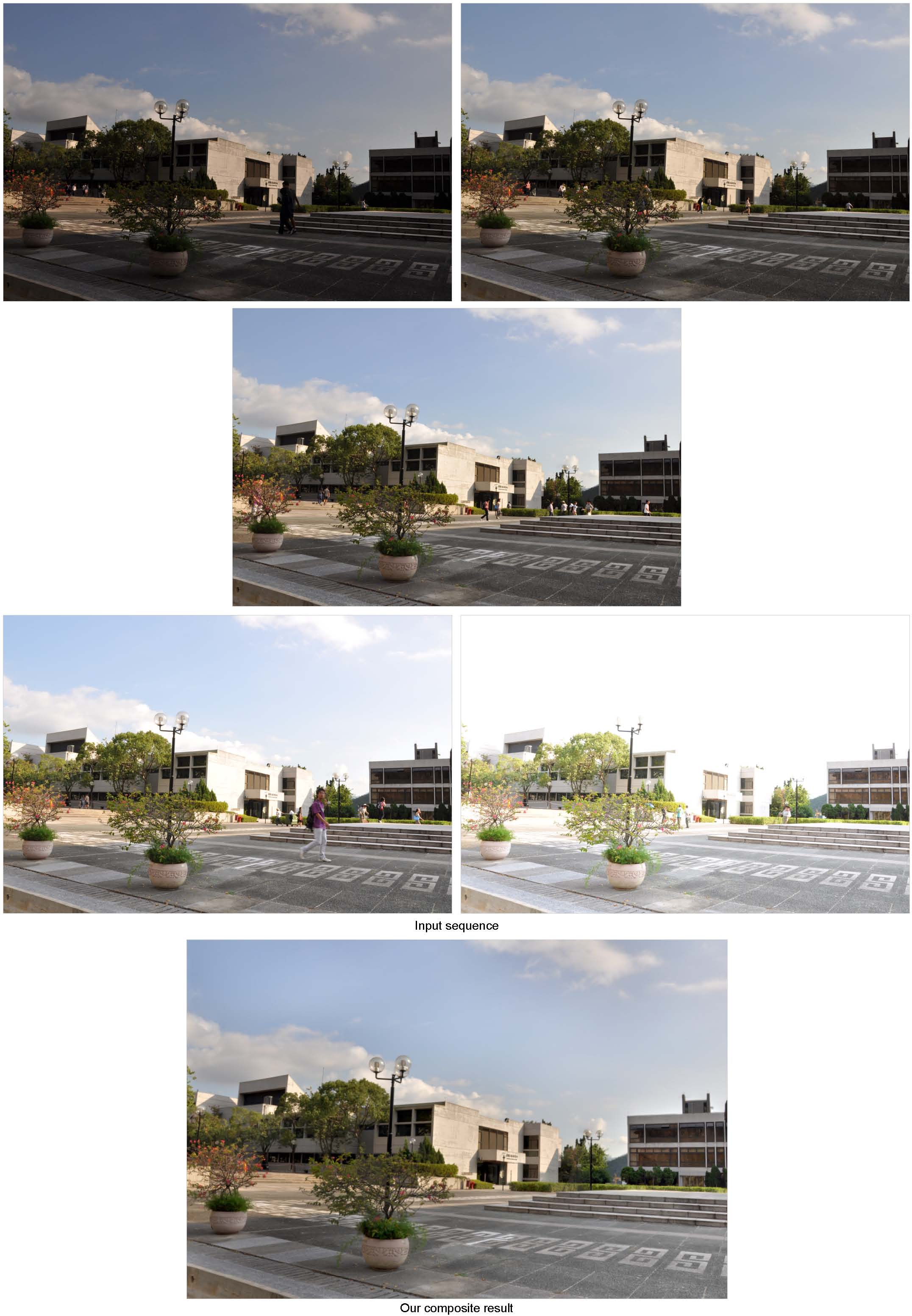
#5
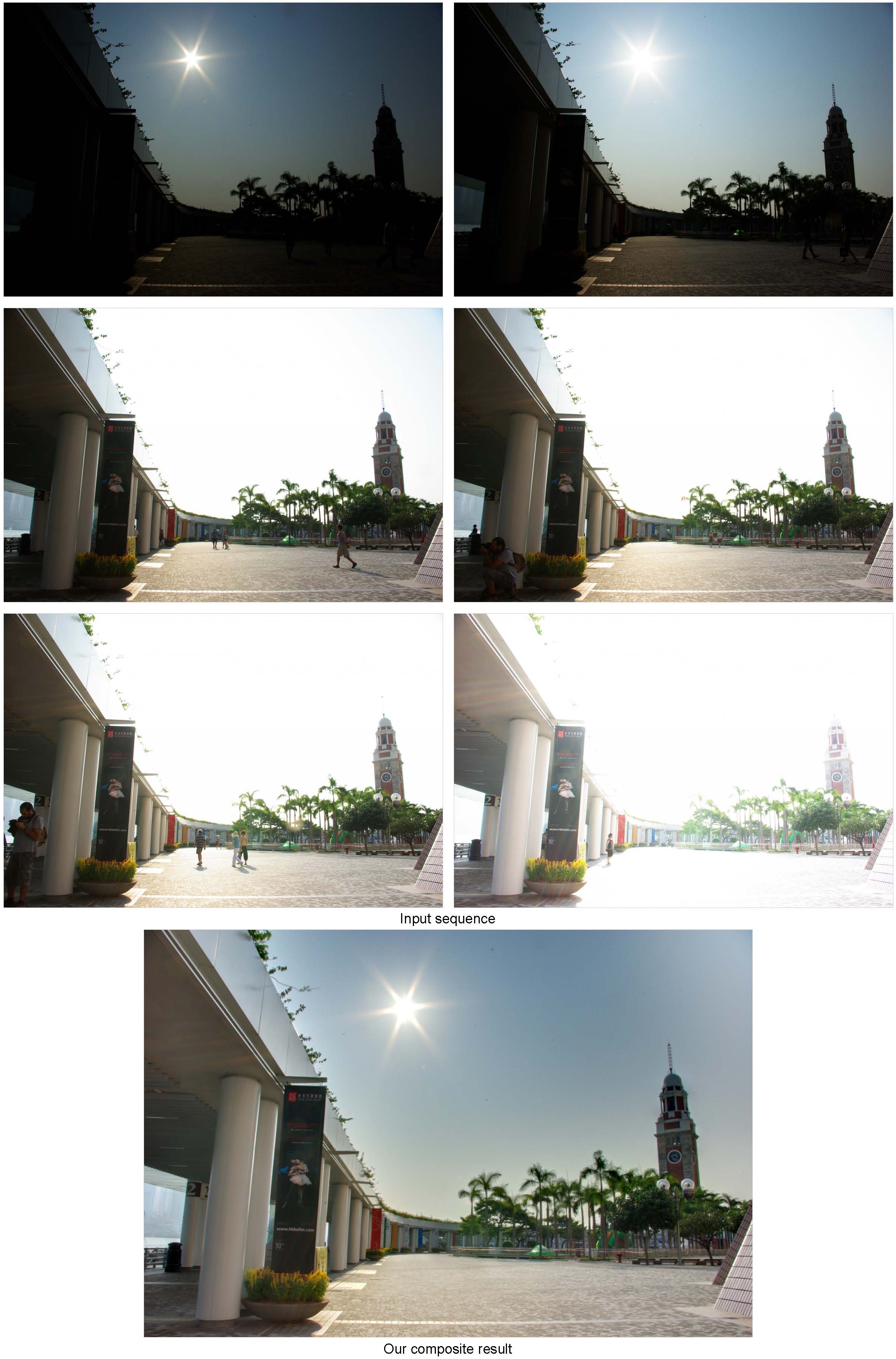
Make all details visible in one image
#1
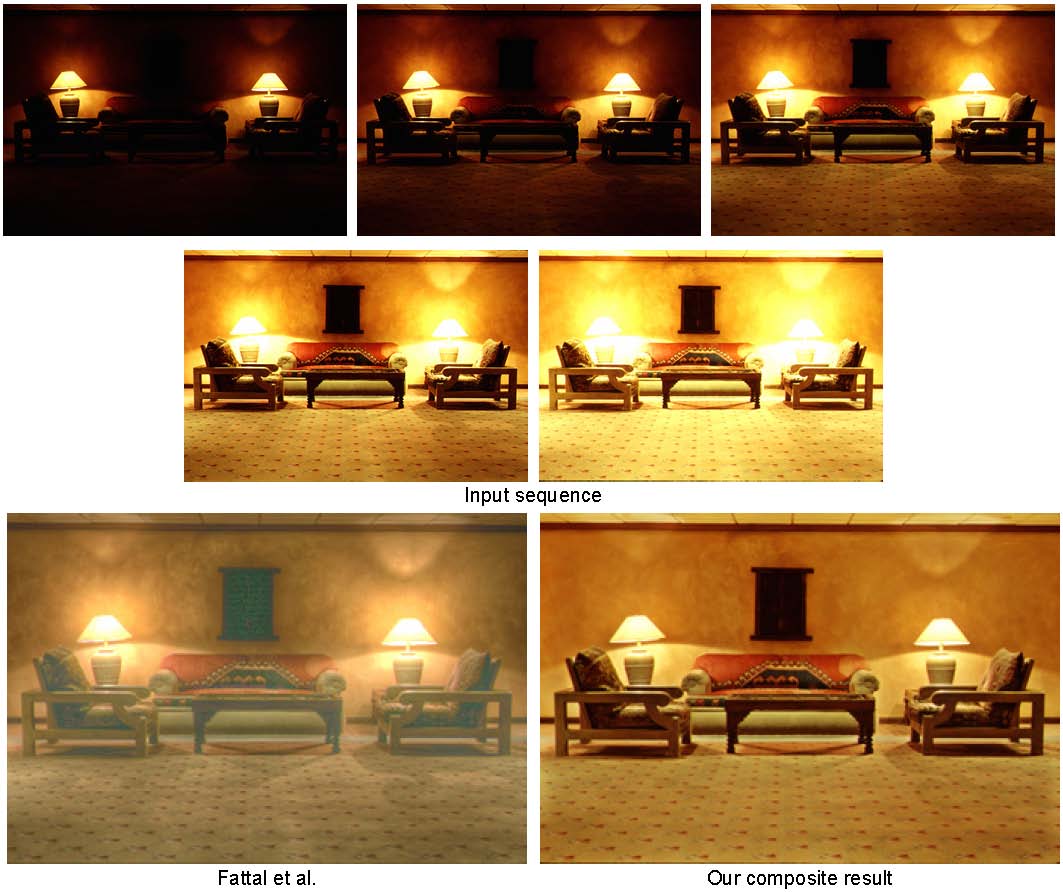
#2
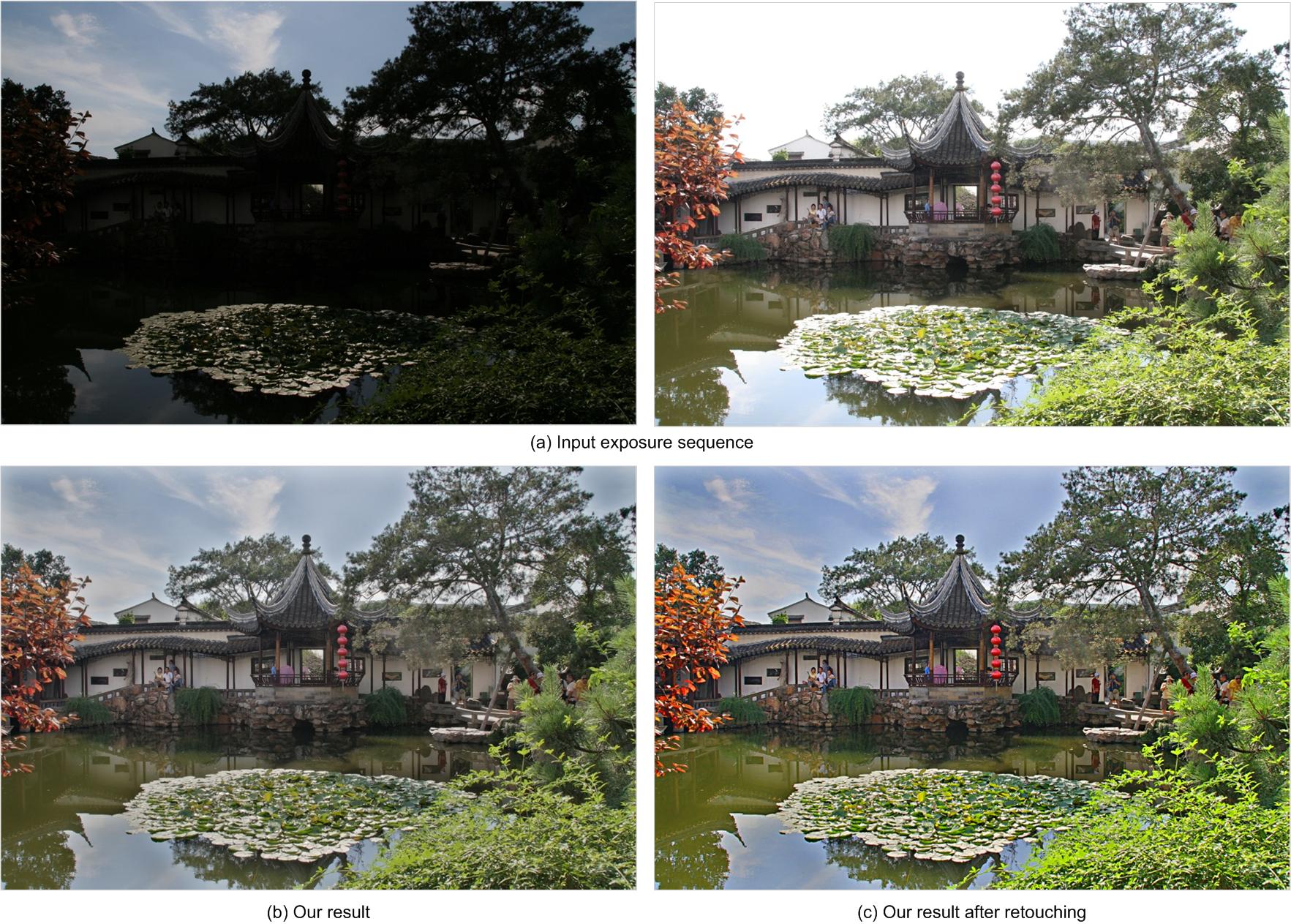
#3
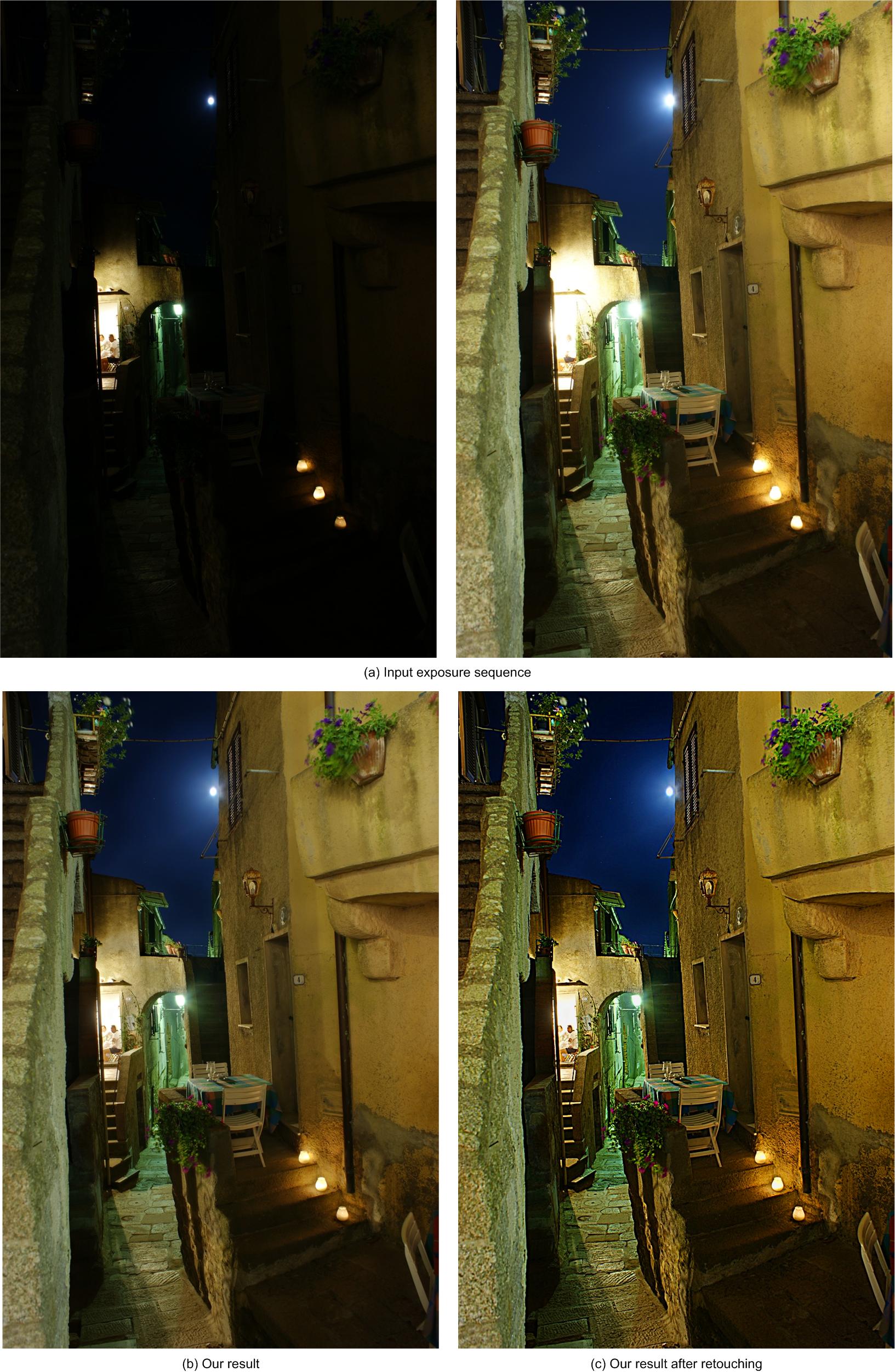
Notes: The retouching result is generated by postprocessing the composite image using some simple retouching tools of Photoshop (e.g. contrast enhancement, saturation adjustment). Apparently, retouching made the results more impressive. Hence, exposure composition + retouching is a promising alternative to conventional HDR technique (radiometric calibration + tone mapping).